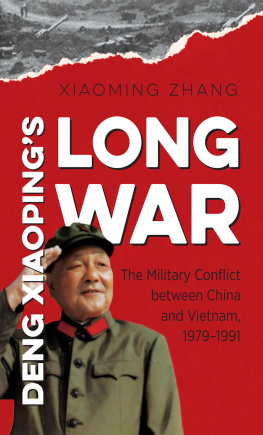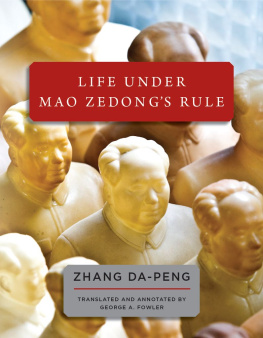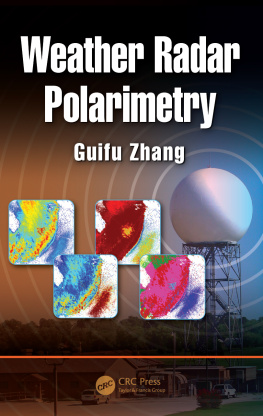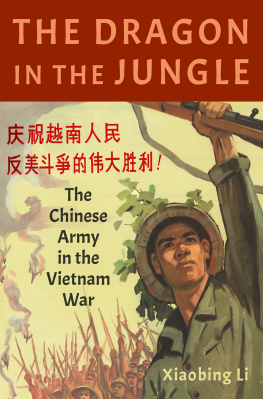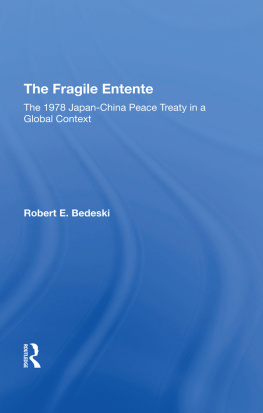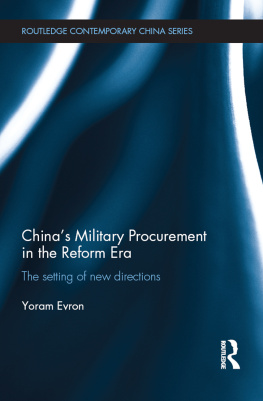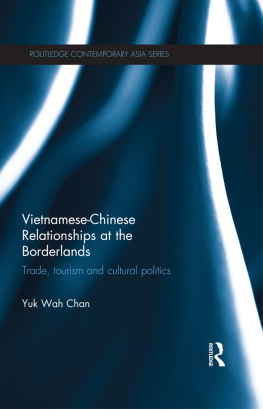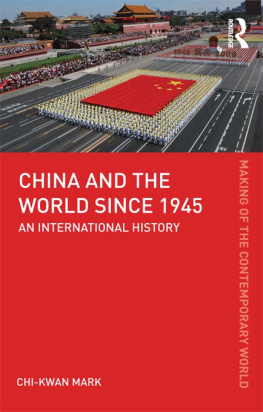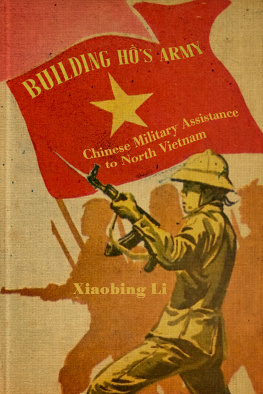Maps and Illustrations
Maps
1 China
2 Chinas invasion of Vietnam, 1979
3 Vietnamese Military Dispositions since 1979
4 PLA Operations along the Sino-Vietnamese Border, 19811984
5 The Battles of Laoshan and Bailihedongshan, 19841987
Illustrations
Deng Xiaoping, 1979
Deng Xiaoping at a dinner hosted by Zbigniew Brzezinski, 28 January 1979
Deng Xiaoping and Jimmy Carter, 29 January 1979
Jimmy Carter and Deng Xiaoping in the Oval Office, 29 January 1979
Deng Xiaoping and Xu Shiyou, 1984
PLA infantrymen ride on tanks, 1979
PLA troops at Thay Nai, Vietnam, 1979
PLA artillery positions on the Guangxi front, 1979
Militiamen bring ammunition to the front, 1979
Laoshan and Dongshan, 1984
The reconnaissance company of the 138th Division, September 1985
PLA troops attack Height 211, 1 June 1985
Soldiers drink rainwater, 1986
Stretcher bearers carry wounded soldiers, 1985
A slaughtered pig being delivered to the troops, 1986
College students welcome returning troops, 1986
Acknowledgments
I could not have completed this book without the institutional and financial support I have received. In particular, I thank the Air University Foundation for a grant that enabled me to do research in China in the summer of 2007 and the Air War College for a 201011 sabbatical that allowed me to finish an initial draft of the book.
Richard Hallion, Robert Ross, and two anonymous readers read the entire manuscript, while Andrew Scobell and Odd Arne Westad read an earlier vision of the manuscript and provided with critical comments and suggestions. In addition, Hallion, a mentor and friend, also did extensive editorial work on the manuscript. I am forever in his debt. Numerous individuals have helped me develop the Vietnamese side of my story. In particular, Merle Pribbenow provided translations of many Vietnamese-language materials and shared his knowledge and insights on the Vietnamese records. Li Danhui and Shen Zihua never tired of sharing newly available Chinese documents from their research.
I also thank the friends, colleagues, and fellow scholars who either have read and commented on parts of the manuscript at various stages or have supported me in other valuable ways: Cai Pengcen, Chao Lihua, Dai Chaowu, David Graff, Amid Gupta, Liu Lei, Martin Loicano, L Zhaoyi, Tao Liang, Arthur Waldron, Yu Weimin, and Zhai Qiang. My special thanks go to Shao Xiao, a history PhD student at East China Normal University and now a faculty member at Lingnan University, who patiently and efficiently helped me collect numerous Chinese publications. I also thank Wang Huazhang, a war veteran, for allowing me to use photos from his personal collections.
The staffs of several libraries offered essential assistance: the Jimmy Carter Presidential Library and Museum; the Yunnan Provincial Archives; the Shanghai Library; and the libraries of the Air University, East China Normal University, and Yunnan University. Members of the University of North Carolina Press editorial staff deserve great credit for their assistance in publishing this book. Cecelia Cancellaro, a freelance copy editor, did a superlative job, saving me from more mistakes than I can enumerate.
I owe a great deal to my wife, Shengli Fang, and daughter, Connie, who have tolerated my absence and inattention while I was researching and writing this study. I could not have completed it without their support and understanding of how much this book means to me.
A WORD ON ORTHOGRAPHY: I employed the Pinyin form of romanizing the names of all Chinese persons and places, with the exception of Chiang Kai-shek. Apostrophes are used occasionally to help with pronunciation. The spelling of Vietnamese personal and place names follows the commonly accepted forms used in English-language literature on Vietnam (e.g., Ho Chi Minh, Le Duan, Ngo Dien Diem, Hanoi, Cao Bang, and Lang Son). Uncommon Vietnamese place names are taken from Vietnamese maps, with the assistance of the Tu Dien Han-Viet Hien Dai (Modern Chinese-Vietnamese Dictionary).
The views expressed in this book are mine and do not necessarily reflect the official policy or position of the U.S. Department of the Air Force, the U.S. Department of Defense, or the U.S. government.
Abbreviations
AAA | antiaircraft artillery |
ASEAN | Association of Southeast Asian Nations |
CCP | Chinese Communist Party |
CIA | Central Intelligence Agency |
CMC | Central Military Commission |
DRV | Democratic Republic of Vietnam |
GLD | General Logistics Department |
GPD | General Political Department |
NATO | North Atlantic Treaty Organization |
NLF | National Liberation Front |
PAVN | Peoples Army of Vietnam |
PLA | Peoples Liberation Army |
PLAAF |

